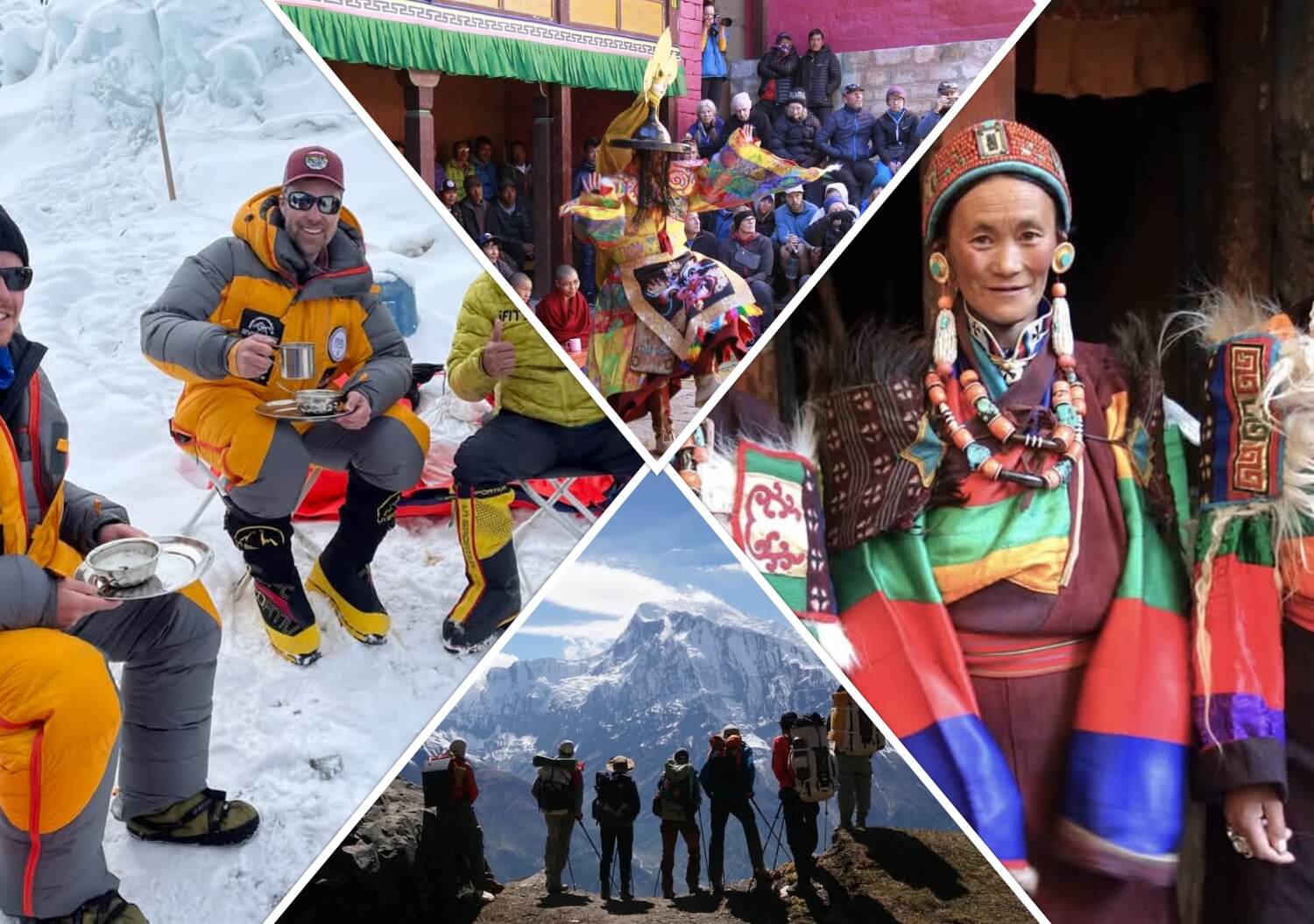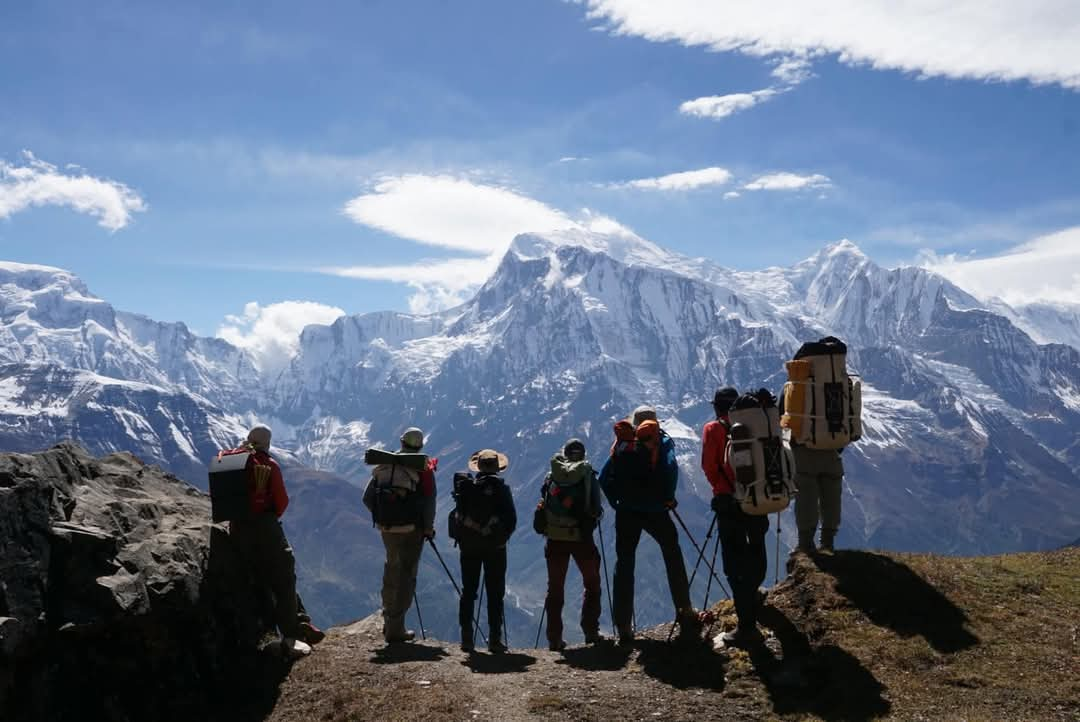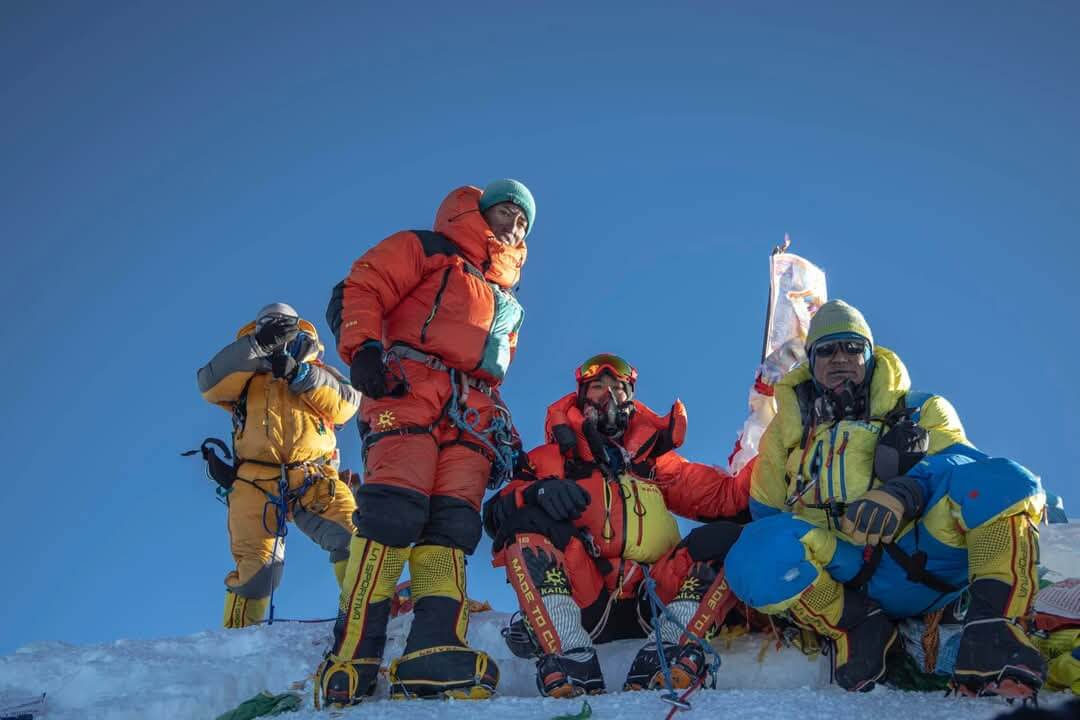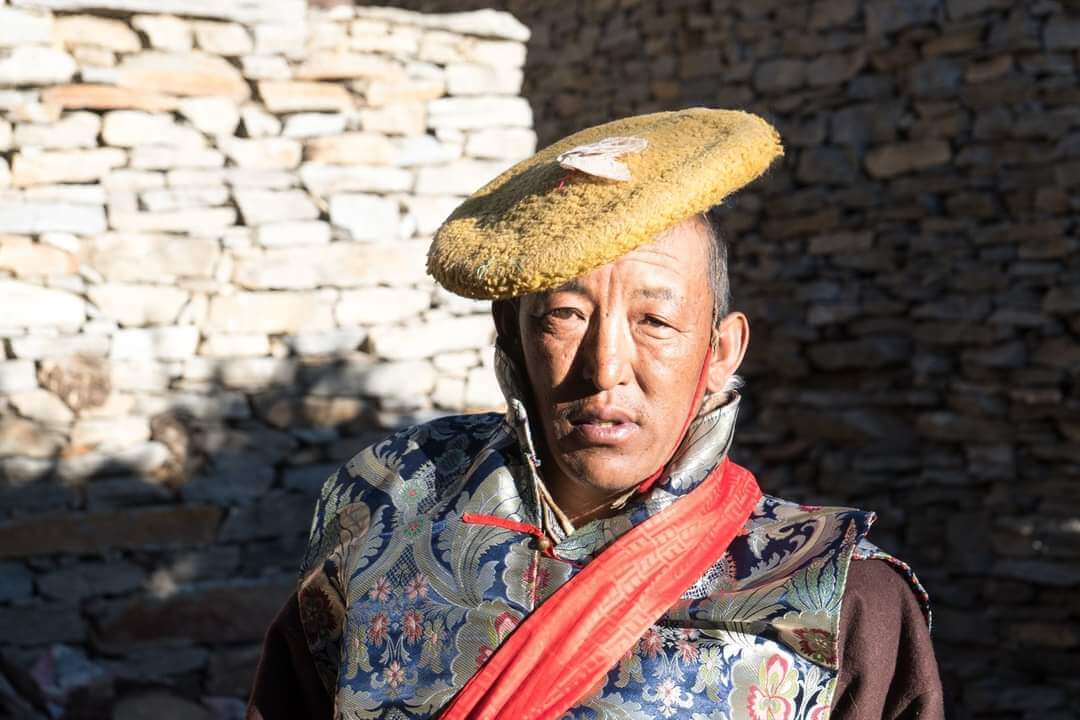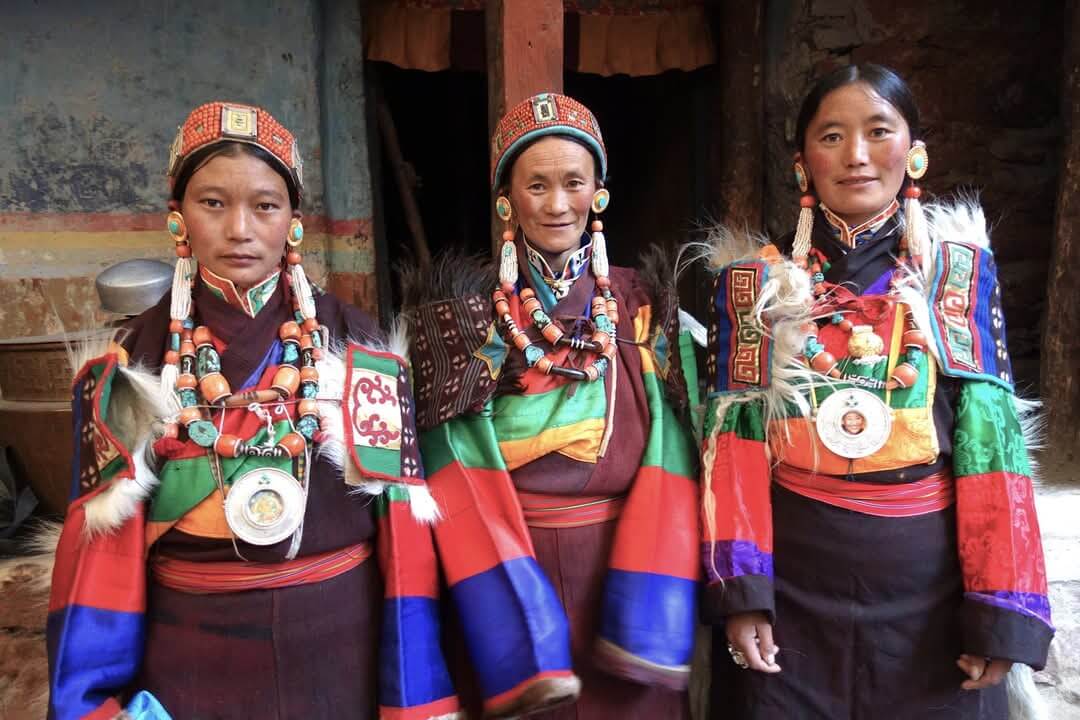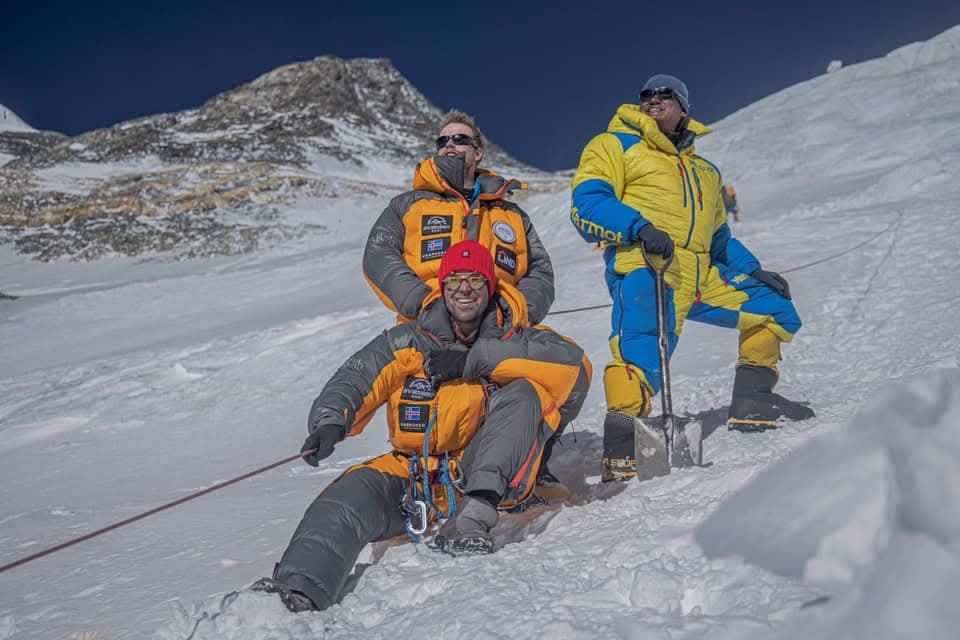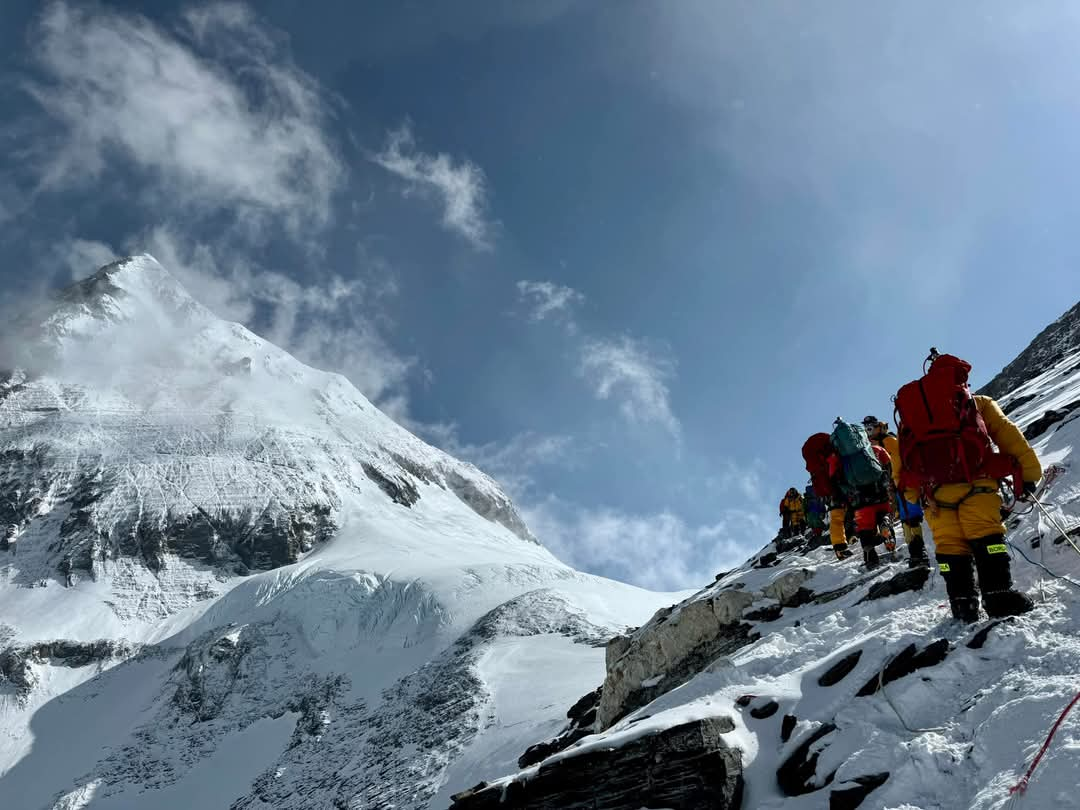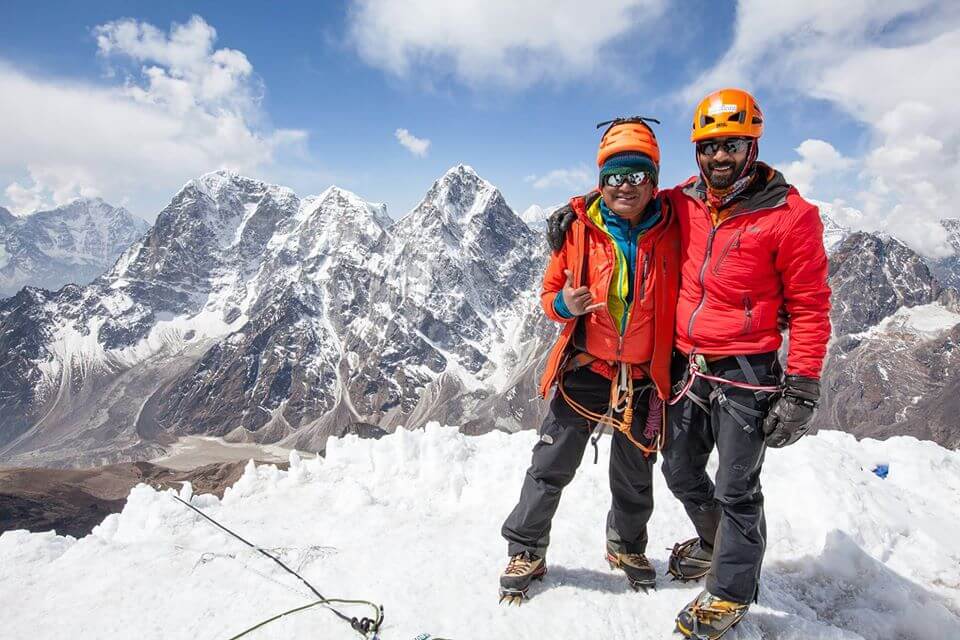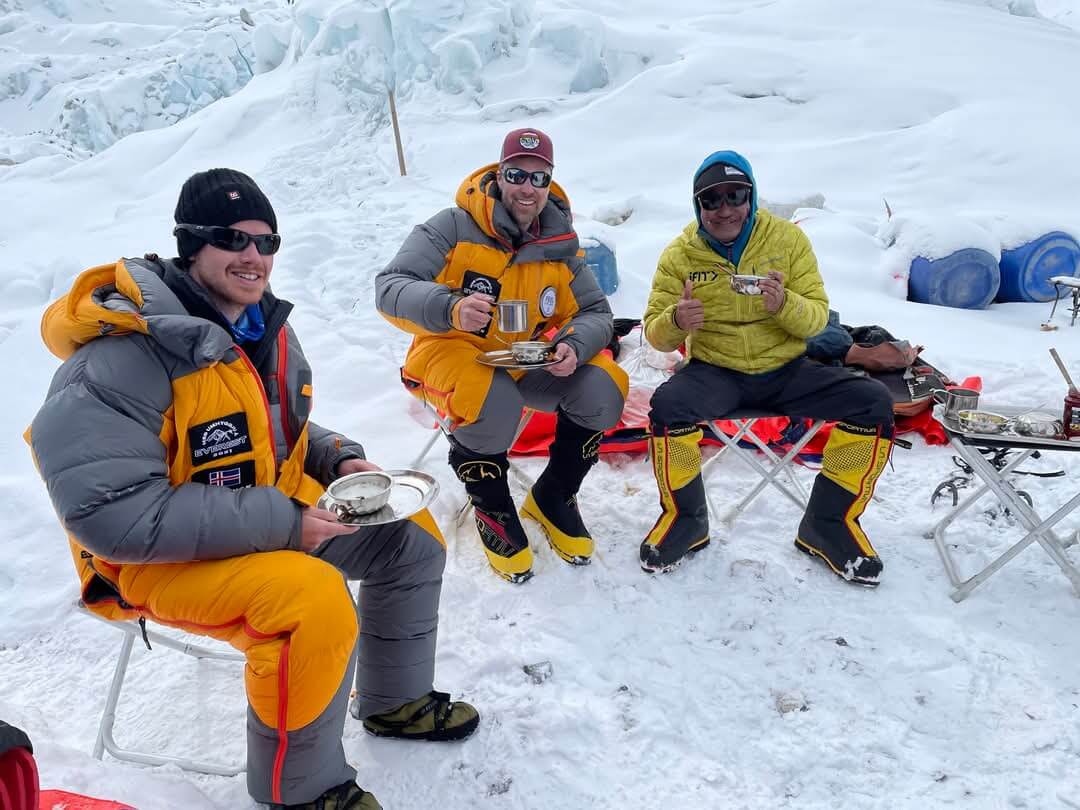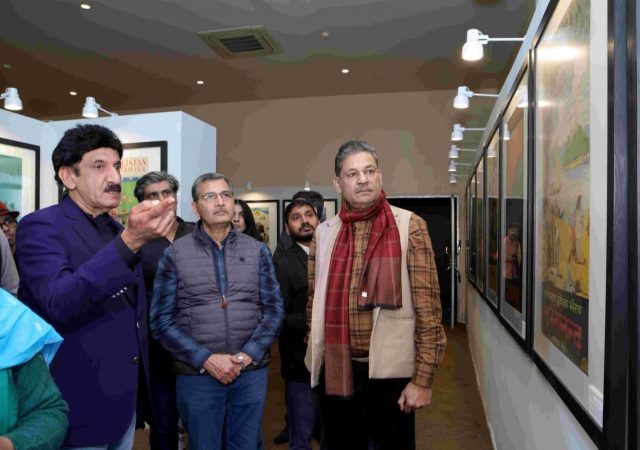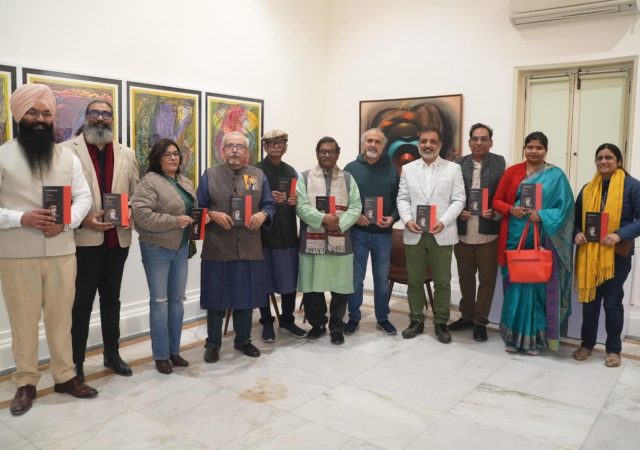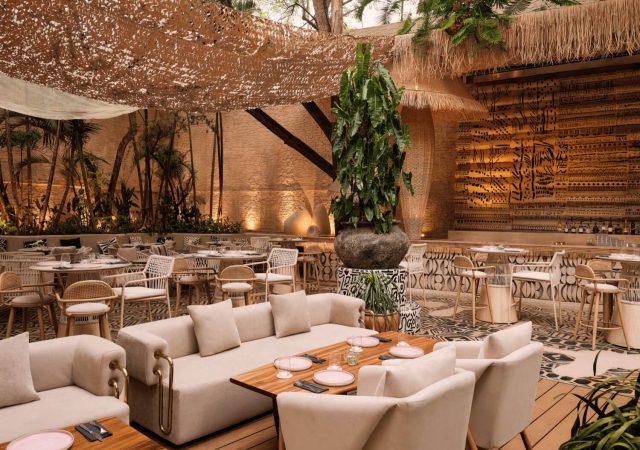( Exclusive Insights on the Himalayas from a Legendary Mountaineer)
By Subhasish Chakraborty, Travel Journalist
The Himalayas are an enigma! And yes, Mt.Everest is here. This is the perception of the outside world – the Himalayas are evocative of Mt.Everest, (Sagarmatha in Nepalese), the world’s highest peak, standing like a sentinel, all of 8850m.
But, how many of us have fathomed the sheer magnitude of the Himalayas – stretching for 2500 Kms. passing through India, Nepal, Bhutan, Pakistan and China, where some of the world’s highest peaks, 110 of them above 7,300m that makes for a dazzling kaleidoscopic vigenette.
No wonder, the Himalayas are considered sacred, held in awe and reverence by the natives. The Himalayas have been luring pilgrims and mountaineers since ancient times. This rarefied zone on Planet Earth has been offering humanity with some of the highest pleasures that go hand-in-hand with the highest dangers!
How about meeting up with a native Sherpa –an extremely endangered Himalayan tribe, renowned the world over for their abilities to survive in extremely cold climatic conditions and their grit, endurance and resilience in surviving at rarefied heights?
Well then, one of the world’s last breed of “Classical Mountaineers” – Ang Tshering Lama, with six successful summits to Mt.Everest, credited with the world’s highest Rescue Mission and a plethora of stellar mountaineering initiatives, is your quintessential Sherpa – “Man of The Mountains”, whose kind attitude, humility and child-like demeanour is sure to enamour you.
I and Ang grew up together in a Baptist Missionary school in India’s remote North Eastern state of Assam, and both of us share a bond of friendship that is rock solid, even if seperated by a thousand miles. We keep in touch at regular intervals and I especially get opportunities to learn so many facets of the Himalayas from him, which otherwise would have remained unknown.
On my recent trip to Nepal, I caught up with Ang at his Kathmandu residence and engaged him on a“Fireside Chat” covering a range of issues pertaining to the Himalayas; from Mt.Everest Expeditions to Sherpa Empowerment and Climate Change to Indigenous Diversity.
Rendezvouz With Ang Tshering Lama: Mad Mountains & Mindfulness:
Q1: You have always been an “Outdoors Guy” – good at sports, blessed with an athletic body and oodles of high octane energy. You left Assam and chose Nepal as your base. And, you left behind academics to pursue Mountaineering. How was this transformation?
A: To be honest, I was never ever an academic minded person. It is due to the peculiar societal traditions in the Indian subcontinet where parents expect their children to be Doctors, Engineers, IT professionals …….that I had to walk the academic path for sometime. But, the very idea of sitting in classrooms and taking lessons from teachers was revolting. Once my family setteled down in Kathmandu; that longing for the mountains, that irressistible pull of the Himalayas kind off overwhelmed me. I started off guiding trekkers to Nepal, slowly graduated towards mountaineering and the first summit on Mt.Everest was truly a turnaround moment in my life. I gained tremendous confidence and never looked back ever since.
Q2: You have summitted Everst six times, which in itself is mind blowing stuff for ordinary mortals like us and you have been mountaineering for 25+ years, extending your stellar mountaineering skills, knowledge and acumen to the world’s mountaineering community. How does it feel?
A: I personally never thought I would come this far as a mountaineer. However, the journey has been incredible, fraught with dangers at every step. Mountaineering has offered me the chance to meet so many wonderful people from acroos the world who have come to visit Nepal and engage in high altitude adventures. Personally, it has been a very satisfying endeavour and one that has enriched my life through the many ups and downs, the vagaries of the Himalayas…..
Q3: As the phenomenon of tourism diversifies, immerssive experiences are what today’s discerning travelers expect from their visit to the Himalayas. You have been a crusader for Indigenous Tourism in Nepal. What are the stellar elements of such Indigenous trips, where roads are intimidating, accomodations are at best sketchy and villages without electricity?
A: For close to two decades now, I have been a witness to the tectonic changes in tourism perceptions occurring in the mindset of today’s discerning travellers. In fact, high altitude mountaineering, and I mean scaling those awesome 8000m ones that you find in the Himalayas, is a challenge to your very existence. And, every expedition that me and my team of trained Sherpa mountaineers undertake each year, they leave you hopelessly exhausted.
However, over the years, my ploy to take mountaineer colleagues from the Western world who come with the intention of climbing some of the world’s highest peaks, are purposefully taken on trips to some of the remotest high altitude villages like Mustang, Pangboche, Dingboche, Gokyo and so on …..just to let them have a feel of rural Himalayas and the centuries old indigenous culture, folklore and traditions of the natives. And, believe me, they just love the experience of living like nomads, partaking their cuisine and experiencing a culture which has stood the test of time as well as the onslaught of modernity. This is a great way to heal your body, mind and soul after a stupendous expedition.
Mountaineering is an integral part of the tourism phenomenon, and it has to be “Regenerative” and “Purposefull” so as to be productive. My aim is to provide a deeper connect between mountaineers and the Himalayas. When you make mountaineering “Regenerative” you create something special and that for me is PEACE. And, I make every effort to ensure that each one of my guest leaves Nepal with peace and happiness.
Q: The Sherpa community has been in the limelight for a long time and their contribution to the world of mountaineering is immense. What are your views on Sherpa community’s future role viz-a-viz mountaineering?
A: The Sherpas are indomitable and one of the rarest breed of mountain tribes, blessed with uncanny knowledge of the mountains they call home – The Himalayas. No expeditions are complete without the quintessential Sherpa – be it pitching tents at Base Camps, cooking food, carrying the logistics and playing the role of a “Navigating Guru” on some of the world’s most trecharious mountain terrains; the Sherpas are an enigma!
For all their stellar mountaineering contributions, a typical Sherpa family still has to fight poverty and other associated evils stemming from financial depravity.
The need of the hour is to make the Sherpas economically self sustaining. Or else the world is on the verge of seeing this rare human species go extinct. A concerted effort to preserve the Sherpas from extinction is of paramount importance. Half cook measures won’t work; and we have had a surefit of them.
For a lasting solution to mitigate the plight of Sherpas, its high time the United Nations should pitch in to preserve this fast depleting race and save it from going completely extinct. I believe the time is NOW.
Q: Nepal doesn’t have a good standing at the global platform when it Comes to gender equality. In 2019, you conducted one of the world’s most daring Himalayan Women’s Empowerment mission ever undertaken by playing the role of a mentor to two widowed women who lost their husbands to the mountains. What prompted you to undertake such a collosal task?
A: First of all, nothing comes easy in the high Himalayas. Every step in Nepal’s hinterland is challenging. More so if you are a woman! Raising children, looking after the homestead, husbands away on work, tending to the cattle, looking after the harvest……Life is intimidating stuff.
Nepalese women in villages are evocative of being shy, tolerant and humble; covered under sheats of traditions and superstitious beliefs. Often, you will come across news of the death of a mountaineer in some faraway inaccesible village who might have been the sole breadowner of the family, thereby resulting into an economic catastrophe, and the burden of rearing the family being thrust upon the innocent woman.
The plight of women in rural Nepal shook me to the core. I took it upon myself to set up a stellar example for Women’s Empowerment in the Himalayas and was involved in “Two Widows Mt.Everest Expedition 2019” from incubation stage to the actual Summit.
Off course, it was a risky proposition and Mt.Everest doesn’t come cheap. On top of it, we needed to train the duo hard. However, it all came down well at the end and both Nima Doma Sherpa and Furdiki Sherpa, showed tremendous levels of enduranc, positivity and the spirit to come out victorious. In fact, I was having goosebumps till the time the two ladies were on top of the summit.
I feel humbled to have been a part of this success story. The message they sent out to the world was one of “Sherpa Women’s Emancipation”; confronted by grief, sorrow and pain of loosing their husbands to the mountains and faced with overwhelming financial adversity, together they summitted the sacred “Chomolungma” and declared to the world that women have infinite potential and no task is beyond limits.
Q: Expeditions to Mt.Everest and other 8000m has seen dramatic changes -pre administered Xenon gas, hypoxic tents/geodesic domes, gourmet meals……All these were unthinkable even a decade back. How do you perceive this new age transformation?
A: Well, the transformations in the domain of mountaineering has been incredible. These days, the concept doing the rounds in Mt.Everest and beyond are high-end summits, that offer premium accommodation, private Sherpa guides and high quality logistical support. But they don’t come cheap and could be in the range of $40,000 to $200,000.
In fact, we at Angs Himalayan Adventure used Hyperlite Mountain Gear packs on our May 2025 Everest summit. These ultralight mountain gears have been thoroughly tested in rarefied heights and are poised to be gamechangers; particularly for my fellow Sherpa guides and porters, who have been doing the hardest jobs in those treacherous trails. Such innovations not only lessen the burden of Sherpas but also makes climbing a seamless experience.
I am particularly delighted with the issue of safety and survelliance which modern day technology offers. The buzz here at the Everest Base Camp right now is about the use of Drones that will airlift logistics and place them exactly where the Sherpa’s want them, thereby reducing the huge burden, which the hardy Sherpa guides have been carrying on their shoulders for so long. So, Yeah! From the safety point of view technology intervention is welcome and in the days to come the world will witness how Sherpa skills and technology combine together in creating stupendous mountain ascents.
On a lighter note, filming at summit level is now a reality, although dangerous, but possible. Just imagine the magnitude and the scale of filming at such rarefied heights, where one wrong step and you are gone.
In fact I was part of an immerssive Virtual Reality documentary ‘THE QUEST’, in charge of Drone Operations and Logistical Support that offered Astonishingly deep insights on not just climbing Mt.Everest, but also a surreal interpretation of Nepal’s highland lifestyle which the outside world is unaware of. An expedition of epic proportions – 52 days of high octane activity, but worth every bit! We received the Best Virtual Reality Film at the Los Angeles Filmm Award. https://www.thequesteverest.com/thequestnepal Every now and then I attempt doing such such short duration videos myself whenever I decide for an Everest summit, but at such rarefied zones, your body gives up and it is hard to even breathe the thin air. But, on the hindsight, I am hopefull and looking forward to the day when Hollywood comes to party at 8850m.
Q: For most mountaineers, Mt. Everest is the ultimate mission. To be on top of Earth’s pinnacle is one of life&’s most satisfying moments. As a pioneer of Mount Everest expeditions and a plethora of 8000ers under your belt, what are your views on the “Everest Aura”?
A: It is fine to be ambitious in life. But ambitions shouldn’t be a show off thing. I feel preety disturbed to see this growing trend of wannabe mountaineers using their Mt.Everest summits as a symbol of wealth and status. There are many who also highlight their exploits as “Conquering Mt.Everest. What type of a mindset is this? Mt.Everest or “Chomolungma” to us in the Indian subcontinent (India, Nepal and Bhutan) is a peak of reverence, humility and compassion. For us Sherpas, we worship her as the “Mother of the World”.
“It is a shame on humanity if Mt.Everest is used as a passport to an elite world. It is belittling the efforts of Sherpa mountaineers who have shown the world of mountaineering new pathways and new horizons through their indomitable courage, time and time again with stellar mountaineering efforts. Not a single ascent to Mt.Everest is even possible without the Sherpa’s knowledge and skillsets.”
All talks of conservation and preservation of the Himalayan ecology is meaningful only when there is respect – be it culture, tradition, folklore or legends. Conservation without respecting the native culture is a big nonsense. In fact, in all my expeditions to Mt.Everest and other 8000ers, I make it a point to craft itineraries that offers visiting mountaineers with a fascinating peek into native indigenous cultures – ceremonies, festivals, village immerssion walks, homestay with natives…..all of which has resulted in forging connections so deep, that goes beyond the ordinary!
Q: Nepal is an anthropological hotspot with numerous fascinating tribes dewelling in the Nepal Himalayas, a vast majority of them finds no mention in tourist guides. Is Nepal ready with Experential Tourism?
A: For the past 25+ years mountaineering in Nepal and my frequent vists to destinations like Scandinavia, Australia, New Zealand and the US, one thing I can confirm is that you do not require to be ready with a plan to succeed in Tourism. The intent is what matters.
Nepal was always ready with Experential Tourism and no wonder the surge in visitor numbers in this sector is gradually building up. I do not know how the Govt. of Nepal is preparing for this paradigm shift, but we at Angs Himalayan Adventure have carved a niche for ourselves in the experential tourism segment. In fact, our out-of-the-box idea of launching The Great Himalayan Trail in collaboration with Alpine Fuzzies, wherein two adventerous souls Kristy and Mike have undertaken this one-of-kind adventure of hiking across the Great Himalayan Trail crossing over 1700kms and climbing over 6100mts passes in just over 100 days with an average ascent and descent over 135000 meters on the whole trip. How is that for adventure?
Q: You have a great collection of photo archives highlighting Himalayas’ indegenous diversity. Which region is your favourite and why?
A: This is a difficult question to answer and in all humility I would stress that it would not be fair to make a comparison aongst the many diverse tribes (36 in numbers). Each tribe is unique, blessed with their own distinct culture and heritage. The tribes in Terai region like the Rana Tharus and Dhimals are poles apart from their bretherns in the highlands like Magars, Limbu, Gurung, Rai etc….
On a purely personal capacity, I am just awed by the Solukhumbu district. Perhaps it is due to my frequent travels to this region and falls enroute to Mt.Everest. For us mountaineers, this region is sacred to us and some of the world’s greatest mountaineers call this region their home – Tenzing Norgay, Ang Dorje Sherpa, Nawang Sherpa, Pasang Lhamu Sherpa, Apa Sherpa……
Off course, reaching Solukhumbu is tough and is a test of endurance. But, once you are there, a whole new world of exploration awaits – the mystical Himalayan highlands, the mesmerising Gokyo Lake, Lobuche Peak, Ambadabalam……all gracefully ready, as if a beauty pageant was on!
Preserving the Everest region in particular is a collosal task and I for one feel that it just not possible for Nepal alone to accomplish such a daunting task. A global effort is the need of the hour as it is a multi disciplinary mission involving environmental scientists, forest & agriculture experts, waste management experts…..
However, off late, it is good to witness the elevated awareness levels prevailing in Solukhumbu region with local communities like lodge /homestay owners, tea shop owners along with the local communities pitching in with sustainable practices like use of solar power, community forest management and the “2 P.M. Rule” making it mandatory for mountaineers to set in motion their descent by 2 P.M. sharp.
Q: In the midst of all the chaos, ancient wisdom, meditation and mindfulness are powerful mediums that creates space for peace. Nepal Highlands are ideal for such pursuits. What are your views on this therapeutic tourism phenomenon?
A: Since ancient times the Himalayas have been the abode of Gods and goddesses. Even today, you will find secluded hill top Monasteries where Lamas are immersed in deep meditation, uttering powerful Mantras for spiritual upliftment.
For us mountaineers, the relevance of having a mind in harmony is of great significance. We need to be superbly focused on our task and there are numerous “Death Zones” where we have to combat extreme weather conditions that makes you debilitated physically and mentally.
However, with all those stupendous peaks surrounding Nepal, we are fortunate to have a plethora of natural healing zones as well where deep introspection and Yoga can be practiced for inner peace and contentment.
I am and my team are regular visitors to Tengboche Monastery, which falls enroute to Everest. The prayers wheels, bird songs and resident monks in meditative mood are just what the doctor ordered before embarking on collosal mountain missions.
The best part of your mindful journey in the Nepal highlands is that it is effortless. Just follow Mother Nature’s call and things begin to fall in place – Walk slowly through peaceful villages, remain grounded and listen to the sounds of nature for a transformation you will cherish.
In fact, I receive lots of requests from Buddhist afficionados to craft “Monastery Hopping” itineraries and try catering to their demands.
Nepal being the birth place of Lord Buddha and its proximity to Tibet, with which Nepal shares international borders, there is a strong Tibetan Buddhism influence in Nepal and His Holiness The Dalai Lama is revered by the people of Nepal, as he is worldwide.
I for one make it a point to visit the Richenling Monastery in Limi Valley bordering Tibet, primarily because of the quintessential Tibet vibes. If you combine mindfulness to mountaineering, it can not only be transformative but also sharpen your levels of awareness, which is so very essential in decision making at rarefied heights, where energy levels begin to drop down and brain fog hits you hard.


